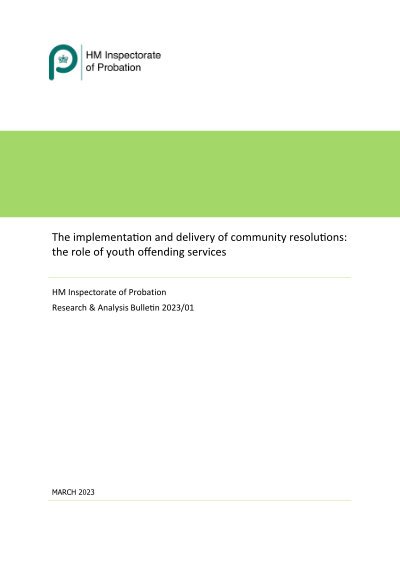By Todd Honeycutt, Janine M. Zweig, Megan Hague Angus, Sino Esthappan, Johanna Lacoe, Leah Sakala, and Douglas Young
Funded and supported by the Annie E. Casey Foundation, several communities across the US have undertaken deep-end reform designed to safely and significantly reduce juvenile out-of-home placement, especially for youth of color. From 2013 through 2018, the Foundation funded a developmental evaluation of this reform to better understand what worked well, what could be improved, and lessons for the field. During the evaluation period, 12 local jurisdictions across the US pursued deep-end reform, receiving grants and tailored, technical assistance from the Foundation. They pursued a range of deep-end reform activities including improving probation practices, enhancing decisionmaking throughout the juvenile justice (JJ) system, expanding diversion and service options, and increasing youth and family engagement.
The Foundation funded a six-year evaluation to understand what worked well and what could be improved and to identify lessons for the field. Researchers from the Urban Institute and Mathematica collaborated on the evaluation and worked closely with Foundation staff to develop and answer questions about the reform using a comprehensive qualitative and quantitative data collection approach. The Foundation began deep-end reform knowing the work would evolve, and it wanted the evaluation to inform and strengthen the reform, track the changes it effected, and document sites’ successes and challenges.
The evaluation team documented its findings in this summary report, four briefs (one each on improving data capacity, advancing probation reform, engaging youth and families, and pursuing racial and ethnic equity and inclusion), a journal article (published in Youth Violence and Juvenile Justice) on transforming juvenile probation through culture change, and technical appendixes documenting sites’ deep-end reform activities and describing the evaluation’s methods.
The evaluation produced the following key findings:
The communities that engaged in deep-end reform conducted multiple activities to reduce out-of-home placements and improve racial and ethnic equity and inclusion in their juvenile justice practices.
Diversion (both before and after adjudication) was an important component of the work that sites pursued.
Probation-specific activities addressed three core areas: (1) improving or expanding case planning (such as through teaming or case reviews); (2) expanding services (for example, diversion activities or wraparound services); and (3) establishing standard processes (as with probation agreements or early termination).
In addition to activities addressing youth’s specific needs, many sites pursued broad activities to improve the capacity of the JJ system (such as developing resource directories or training probation staff) or engage youth and families (such as providing information or developing family councils).
Most probation staff report always or very often focusing on youth’s strengths and assets to motivate change. This focus includes working closely with their parents and caregivers to achieve desired outcomes, individualizing service plans based on their unique needs, and talking directly to youth about their probation terms and conditions. From 2016 and 2018, probation staff in sites implementing deep-end reforms reported more frequent use of practices and principles addressing community engagement and racial and ethnic equity and inclusion.
Although sites shared no single characteristic that appeared linked to the success of deep-end activities, five particular characteristics were common and were therefore considered assets to implementing reform: (1) deep-end reform leaders with positional power, (2) deep-end reform leaders committed to reform, (3) strong community partnerships, (4) stakeholder and site staff buy-in, and (5) substantial data capacity.
The evaluation yielded two lessons about engaging youth and families. First, involving youth and families at the individual level (for example, including them in case planning) might be less difficult than engaging them at the system level (such as on a family council to advise JJ leaders). Second, external resources (such as technical assistance and collaborations with community organizations) can facilitate activities related to youth and family engagement.
Racial and ethnic equity and inclusion does not have a one-size-fits-all approach; stakeholders must consider their unique challenges and opportunities and apply strategies that fit their needs. Collaborating with youth, families, community members, and organizations outside the JJ system is essential for advancing equity and inclusion goals.
Sustaining changes to deep-end policy and practice related to probation required buy-in from frontline probation staff and a shared understanding of the purposes of probation. Almost every site engaged in discussions to understand deep-end staff and stakeholders’ views about the purposes of probation through technical assistance that the Foundation sponsored.
Certain key factors can help a jurisdiction use data to inform its reforms and decisions. These factors include staff buy-in, expertise in analytical methods and the JJ system, staff capacity to gather data, data collection system capacity, and cross-system coordination and information sharing.
When asked about the benefits of participating in deep-end work, stakeholders identified overarching examples across five categories: (1) focusing more strongly on JJ practices, especially on understanding and addressing racial and ethnic disparities and on engaging youth, families, and communities; (2) using data more to drive reductions in placements and racial disparities; (3) leveraging additional resources, such as finding additional funding to sustain reform efforts; (4) reducing out-of-home placements and safely meeting the needs of youth and families in the community; and (5) benefiting from training and technical assistance and learning about elements of the deep-end vision and key activities.
As with many complex initiatives, deep-end reform involves challenges. Culture change, particularly toward addressing racial disparities and increasing inclusion, can be difficult to achieve at all levels of the JJ system. Partnerships, particularly with community organizations and youth and families, can require significant time, energy, and dollars to be successful. Multiple sites struggled with collecting and analyzing the data needed for reforms. Though stakeholders often overcame these challenges, doing so was not easy, even with a committed team and Foundation assistance.
Washington, DC: Urban Institute, 2020. 44p.





















